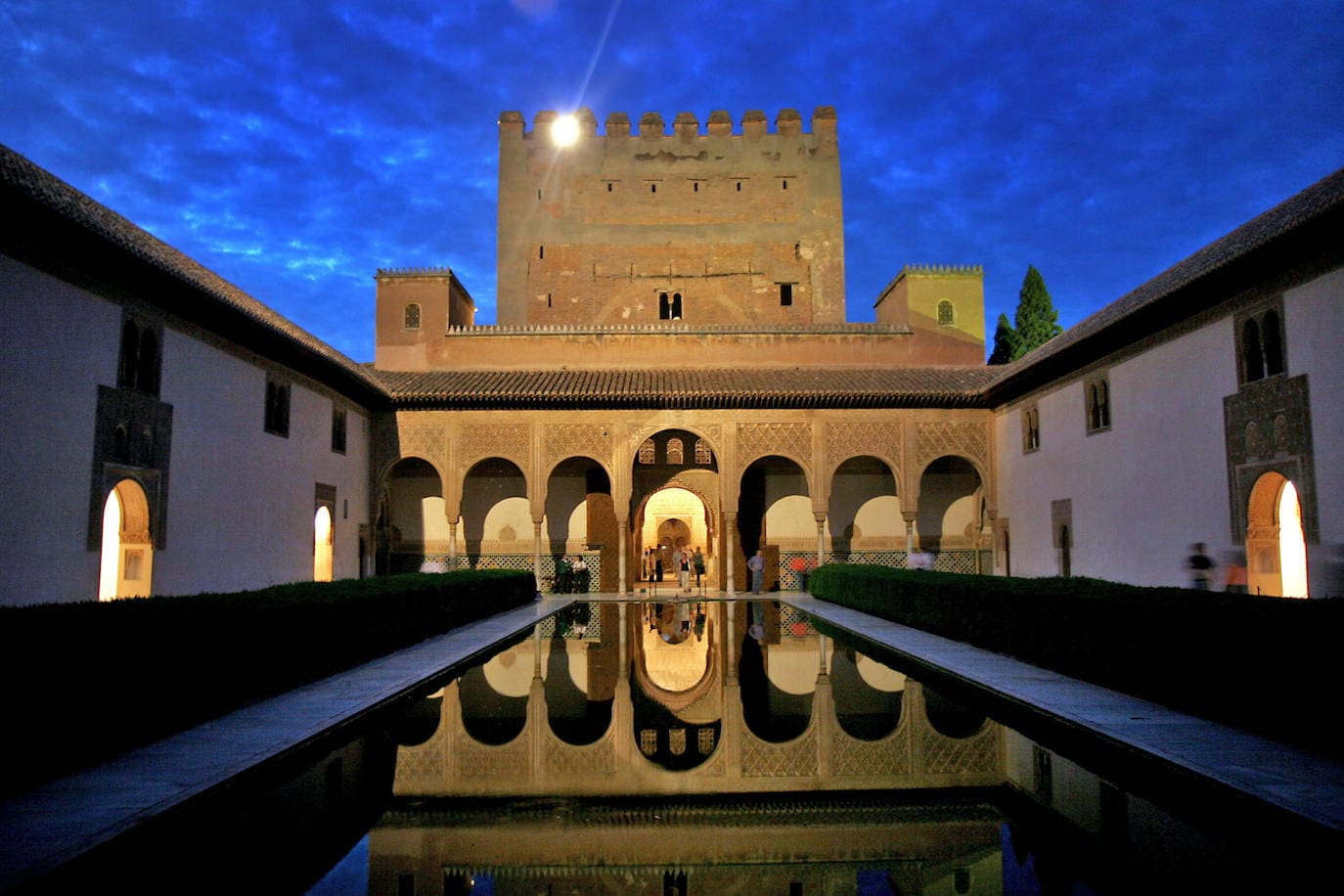Revisiting Granada
An Arabian adventure. It's always a pleasure to go back to the city of the Alhambra; now's the time to plan an autumn trip and see it in a different light
ANDREW FORBES
Friday, 26 August 2022, 13:34
My guide fumbled a little in the shadows, searching for the light switch; then with a series of clicks, ceiling chandeliers sparkled and gleamed into life, filling the space with light. To each side stood robust columns, decorated with "Mocárabe", neo-Mudéjar designs reaching for the ceiling. In front of me was a small stage, under a bold horseshoe arch, looking out to small groups of vintage chairs and low tables. '
"This is the hotel's theatre," explained my guide. "Federico García Lorca performed his poetry here in the 1920s!" she added, as she began to tell stories and anecdotes of one of the capital's most emblematic buildings.
I'm revisiting Granada, taking a behind-the-scenes tour of the Hotel Alhambra Palace, said to be the oldest five-star hotel in Spain, and a wonder of theatrical, flamboyant Moorish-style architecture.
It's always a pleasure to come back to this city, as it never fails to capture my imagination. In the 18th century, European "romantics", such as artists and wealthy tourists came here to be mesmerised by the architecture, unusual colours and designs that inspired paintings, music, and writing - and now it's one of Europe's most visited destinations.
A couple of hundred years ago, the challenging journey to Granada was rewarded with the opportunity to be immersed in the romantic ruins of an enigmatic Arabian kingdom straight out of the storybooks.
Later, writers such as Washington Irving, a former US ambassador to Spain in the nineteenth century, also fell under the spell of Andalucía. He wrote extensively about Granada, enthralled by myths and stories surrounding the Christian conquest of the Moorish Alhambra and its Albaicín by the Catholic Monarchs.
He collected tales and legends from locals, and his books went on to create waves of tourism. With so many visitors, of course, comes the need for places to stay.
Fantasy architecture
So, it was on 1 January 1910 that the Hotel-Casino Alhambra Palace was inaugurated by his majesty the King, Alfonso XIII.
With the Alhambra citadel above, and the city of Granada and its verdant valleys below, this property soon became the fashionable place to stay when visiting the Alhambra.
Built by an enterprising aristocrat, the Duke of San Pedro de Galatino, the Hotel-Casino Alhambra Palace opened at a time when more than 18,000 visitors a year were drawn to the Nasrid palaces, their intricately decorated courtyards, and the magnificent gardens of the Generalife.
The hotel has since become part of the heritage of Granada. The casino has long gone (just one original roulette wheel is on display in the lobby) but the extravagant decoration in the Mocárabe Neo-Mudéjar style remains - it is like walking onto a film set. Every doorway is an elaborate archway with stucco plasterwork with surahs of intricate Arabic calligraphy; each wall has geometric designs, carved plaster, vintage marble, or tile mosaics; an over-the-top, romantic interpretation of an Arabian Nights story.
Theatre of arts
The hotel's intimate theatre is where King Alfonso XIII enjoyed his New Year's Eve party, the day before the property's inauguration. By the 1920s the space was an established part of the capital's cultural scene. I was captivated by stories of singers, actors, musicians, and poets that had performed on that stage. It was extraordinary to feel so close to where the young poet Federico García Lorca had once shared his early works.
In 1922 there was a flamenco festival of arts, music, song and dance, El Concurso de Cante Jondo de Granada. Here Lorca performed his poems, together with musicians, such as the famous guitarist Andrés Segovia, and renowned singers. Lorca's works would later be published, yet they were heard here first, in this small theatre in the Hotel Alhambra Palace.
This was to be my base for a few days revisiting the city, taking in the breathtaking, ornate beauty of the Nasrid Palaces of the Alhambra, and reacquainting myself with the medieval Moorish district of the Albaicín. Autumn sees the intense heat of summer subside, giving way to balmy evenings perfect for mooching around, and of course, taking in tapas at different bars along the way.
The Alhambra is also more accessible than it has been for years, as tourist levels have not yet returned to pre-pandemic times. This time I took a fresh perspective and booked a night visit.
Nasrid palaces night visit
It is as the sun goes down, casting warm tones across the ochre walls of the Nasrid palaces, that the small queue begins to build to enter the Alhambra's most intricate chambers, once the seat of the Sultanate of Granada. Looking at the plain terracotta and earth coloured exterior walls of the buildings, it is always a surprise to later experience the intricate, ornate artisanship that is found within.
The Moor's Last Sigh
Walking through the Sultans' palaces at night gives a more intimate perspective to these remarkable spaces. Although the lighting is not as impressive as say at Cordoba's Mezquita, the contrast of light and shadow creates an evocative ambiance. It reminded me of the Spanish legend of The Moor's Last Sigh.
High up in the Alpujarra, heading towards the peaks of the Sierra Nevada mountains is a pass overlooking Granada. It is called, El Puerto del Suspiro del Moro, the Pass of the Moor's Sigh. This is said to mark the place, five hundred years before, where the fleeing Nasrid Sultan of Granada (known in Spain as Boabdil 'El Rey Chico') looked back from the mountain trail at the beauty of the Albaicín quarter, and the magnificence of the Alhambra that he had surrendered and wept. More than half a millennium after the Catholic Christian Monarchs of Spain took the Alhambra, the allure and beauty of this place is undiminished.
Official tickets
Tickets are available online from various sources, but I recommend purchasing directly from the official Alhambra website. There are many professional and reliable agencies and tour guides, but there are also many fake web sites, so it is safer to book direct.



